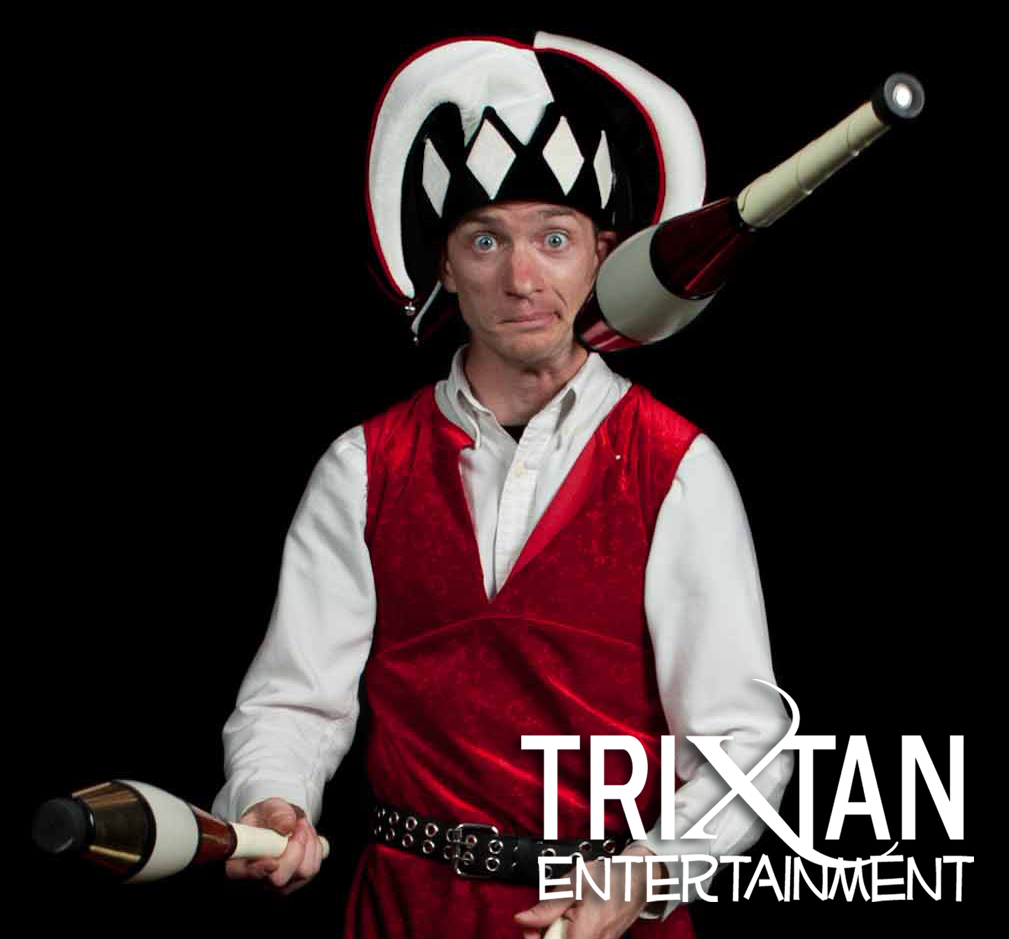The Different Types of Clowns
Did you know that there is more than one type of clown?
The name clown gets thrown around a bunch in our everyday lives, but when people hear the word clown not many people could tell you the difference between Clowns, yet we see them all the time and you might not know it! So here we are to help fill you in on the different types of Clowns. There are many different types of Clowns, the most notable clowns are the following,
Whiteface Clown
There are two major different types of White Face Clown, the Classic Whiteface Clown derived from the Pierrot character and the other is the Buffoonish Clown, known as “Comedy Clown” or “Grotesque Whiteface Clown”. This type has grotesquely emphasized features, especially a red nose and red mouth, often with partial (mostly red) hair. One of the Clown Characters to popularize this in North America is Bozo the Clown, this is the type of clown most people think of in North America when you mention the word “Clown”
Whiteface Clown covers their face in white makeup and their body in oversized clothing including oversized shoes. They start by covering their face and neck with a coating of clown white greasepaint, then they add features to that typically using red or Black. Most Whiteface Clowns wear bright multi-coloured clothing, so they can be seen and picked out at a distance. The Grotesque, or Comedy Clown usually would accent their face with large features including the eyes, nose, and mouth, wears outlandish clothing and even wears a bald cap and fake hair, usually red.
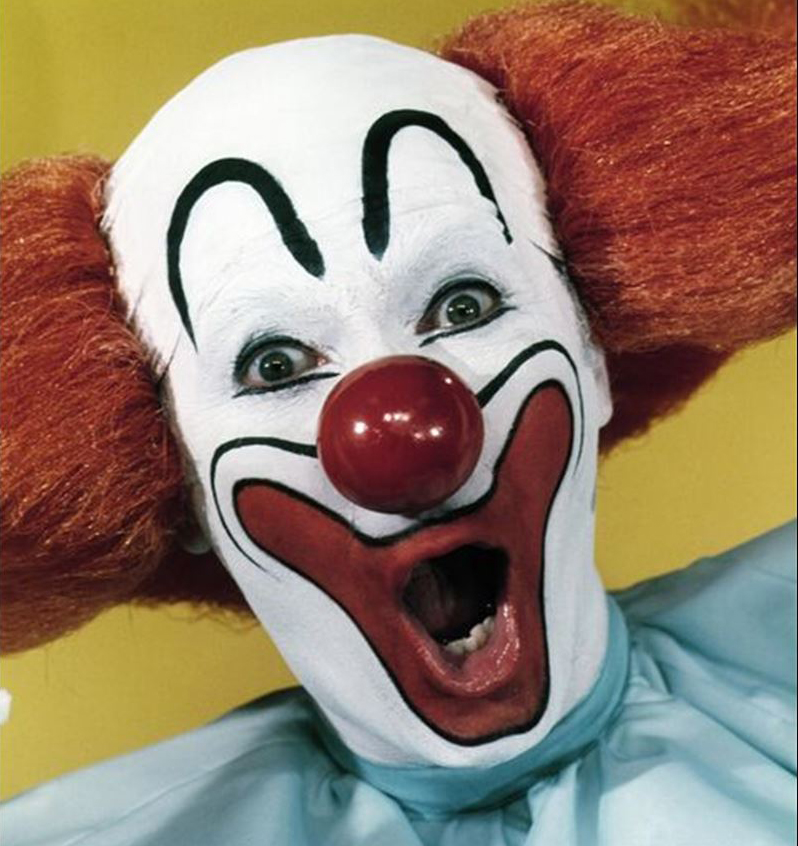
Auguste Clown
The Auguste clown wears white around their eyes and mouth, and covers the rest of their exposed skin with a flesh colored greasepaint base. They generally use a large imitation nose. They may paint their lower lip red or black, and frequently have exaggerated eyebrows. They may wear a colorful wig, or a bald top wig with a fringe of hair around the sides. Their costume usually has very bright colors, and is frequently too large.
During most of the twentieth century, the Auguste clown was a stupid and clumsy character. The Auguste either couldn’t figure out how to get anything right, or they were the victim of pranks pulled by the Whiteface clown. Clowning is a creative art form that constantly evolves. By the end of the century the Auguste clown has evolved to the point where it is sometimes interchangeable with the Whiteface clown in actions. For competition, however, a strict adherence to the character’s “traditional” role is necessary.
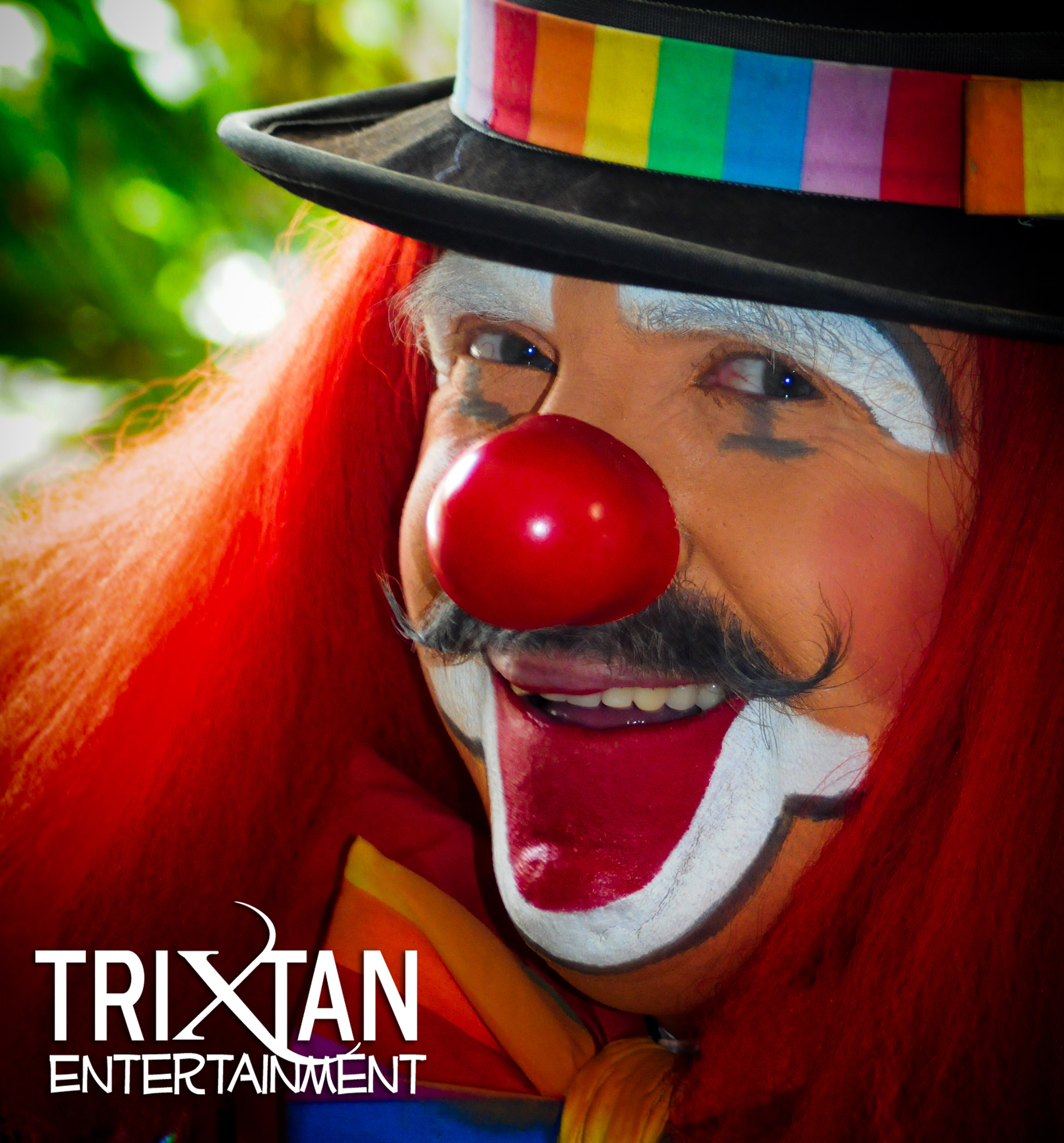
Tramp Clown
The Tramp clown was inspired by homeless people late in the nineteenth century. A Tramp clown paints white around their mouth, and may also paint white near their eyes. They paint an artificial beard using greasepaint. Their clothing is either patched or tattered.
A Tramp clown can be happy or sad. During the early twentieth century there was more variation within the Tramp clown then any other type. There were singing Tramps, juggling Tramps, Tramp magicians, silent Tramps, Tramp monologists, skating Tramps, Tramp artists, and even Tramp pianists.
The best-known examples of this type of clown are Emmett Kelly and Red Skelton as Freddy the Freeloader.
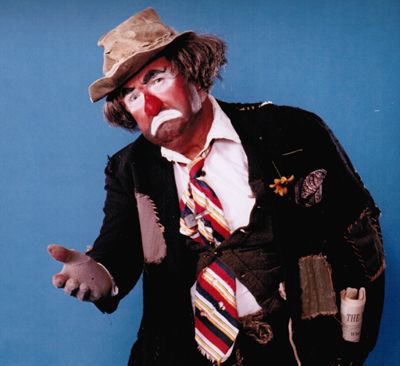
Character Clown
The Character category of clown exists only in clown competitions. In make up competition, there is often a category for those whose costume depicts a specific occupation, hobby, or easily identifiable individual. Their make up can be Whiteface, Auguste, or Tramp style. In reality, costume does not determine character type. The clown’s personality is their character. A clown can be a cop, baseball player, doctor, and a boxer at different times without changing character as long as their personality doesn’t change.
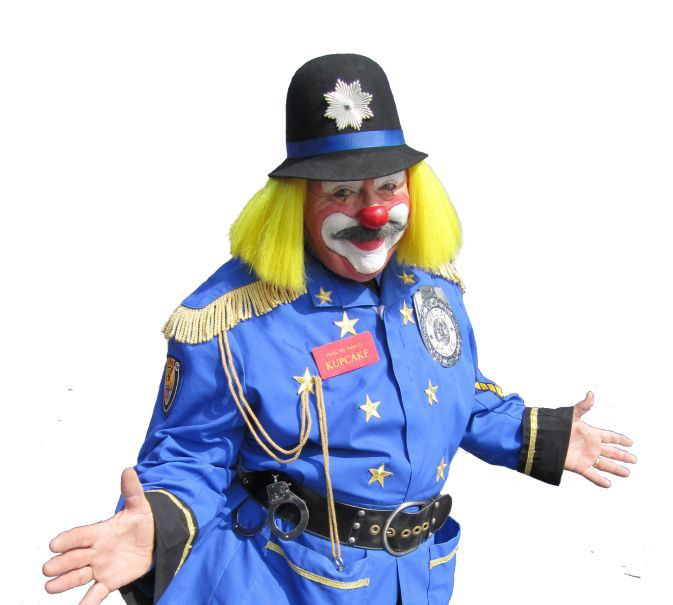
Mime Clown
Some clowns combine the art of mime with clowning. Often they wear a mime style make up which ends at the jaw line, leaving their neck uncovered. (Some clowns view this as an amateurish style of make up, and refer to it as dirty neck clowning. If you use this make up style, you create the expectation that you will perform mime illusions.)
The best known Clown Mimes are Marcel Marcau, appearing as his clown character Bip, and Nola Rae.
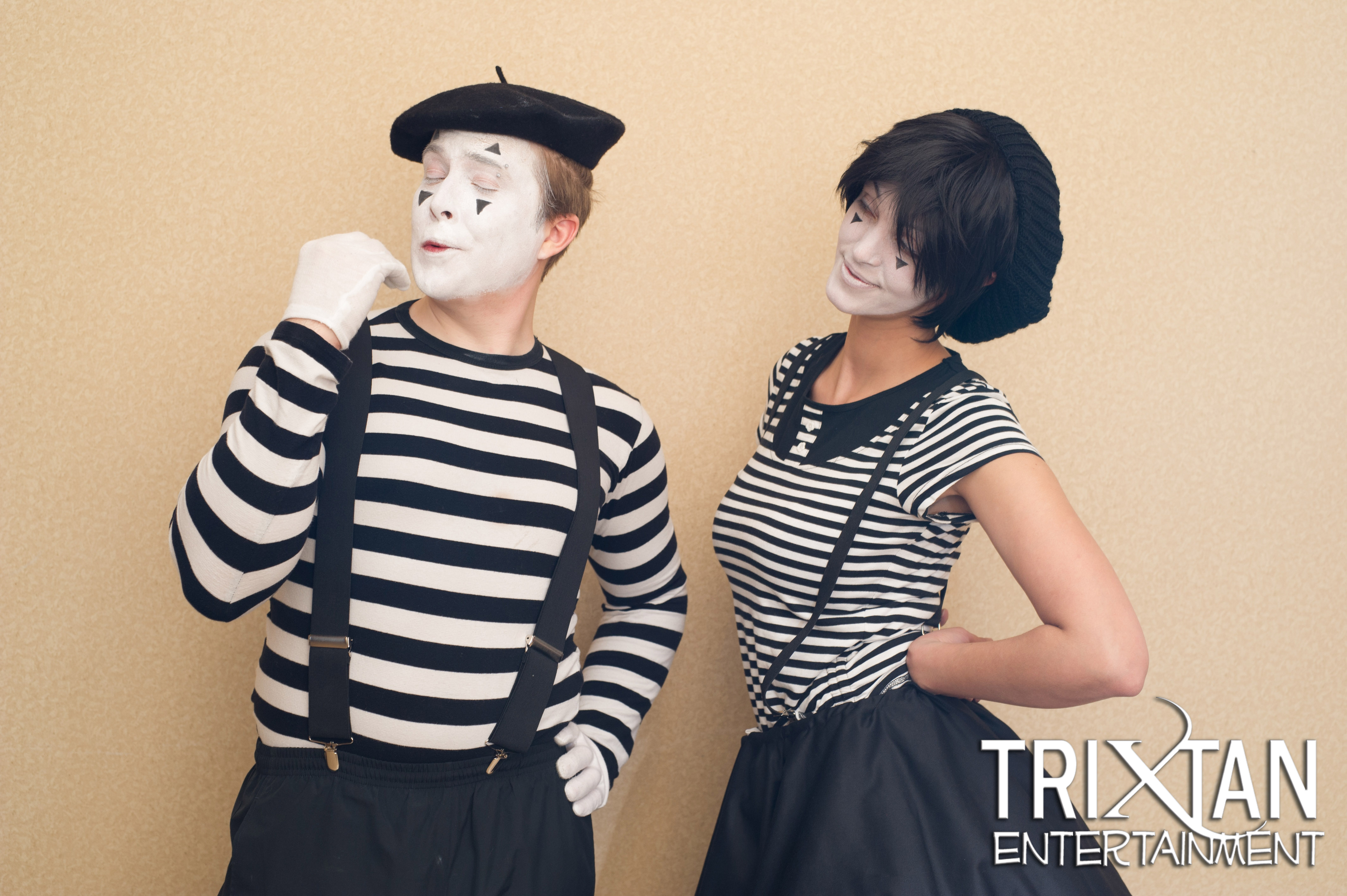
Rodeo Clowns
Rodeo performance is a very specialized branch of clowning. Some rodeo clowns use Tramp or Auguste style make up. There is also a very distinct style of rodeo make up based on geometric shapes instead of the performer’s natural features. There are two types of rodeo clowns, the barrel clown and the bullfighter.
The barrel clown uses a large padded metal barrel as a home base in the center of the arena. They may lure the bull into attacking the barrel, and then brace themselves curled up inside to survive the impact. Tramp clown Jasbo Fulkerson was the original barrel clown.
A bullfighter clown will often wear a skirt made from taking out the inseam of a pair of jeans and then sewing the two halves together. This skirt is held up by one suspender. The purpose of the bullfighter skirt is to be able to slip out of it quickly if a bull hooks the material. Most rodeo clowns have protective pads hidden under their costume. They also wear track shoes with cleats.
Rodeo clowns have the very serious job of protecting cowboys during the bull riding contest. The best rodeo clowns are also all around entertainers. They help fill breaks in the action and perform featured acts. Many rodeo clowns use trained animals in their act.
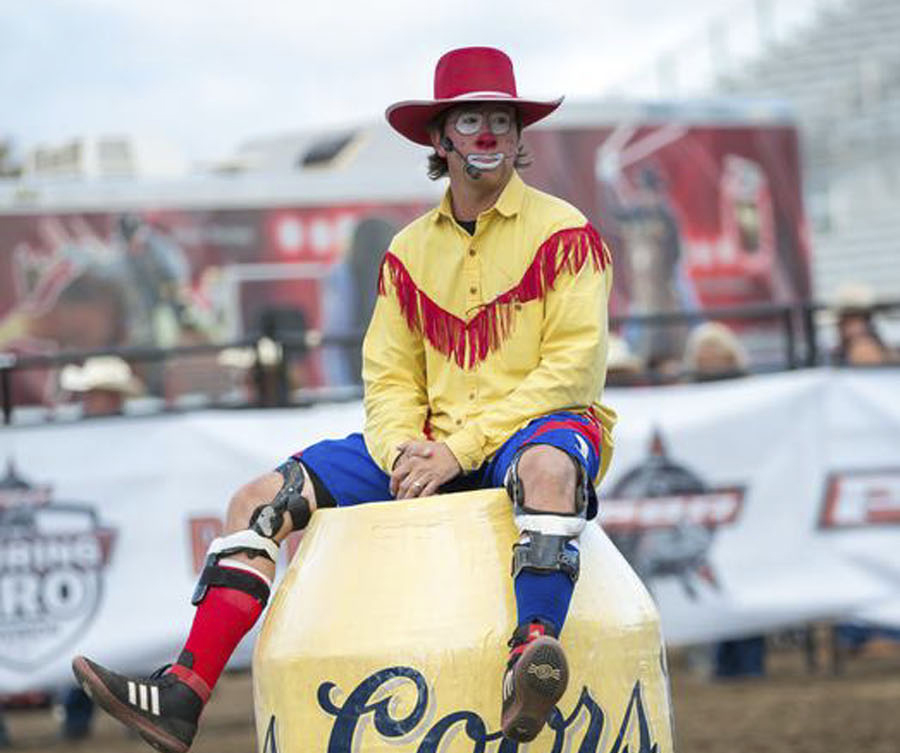
Creepy Clown
The evil clown archetype plays strongly off the sense of dislike it caused to inherent elements of coulrophobia; however, it has been suggested by Joseph Durwin that the concept of evil clowns has an independent position in popular culture, arguing that “the concept of evil clowns and the widespread hostility it induces is a cultural phenomenon which transcends just the phobia alone”. A study by the University of Sheffield concluded “that clowns are universally disliked by children. Some found them quite frightening and unknowable.” This may be because of the nature of clowns’ makeup hiding their faces, making them potential threats in disguise; as a psychology professor at California State University, Northridge stated, young children are “very reactive to a familiar body type with an unfamiliar face”. This natural dislike of clowns makes them effective in a literary or fictional context, as the antagonistic threat perceived in clowns is desirable in a villainous character.
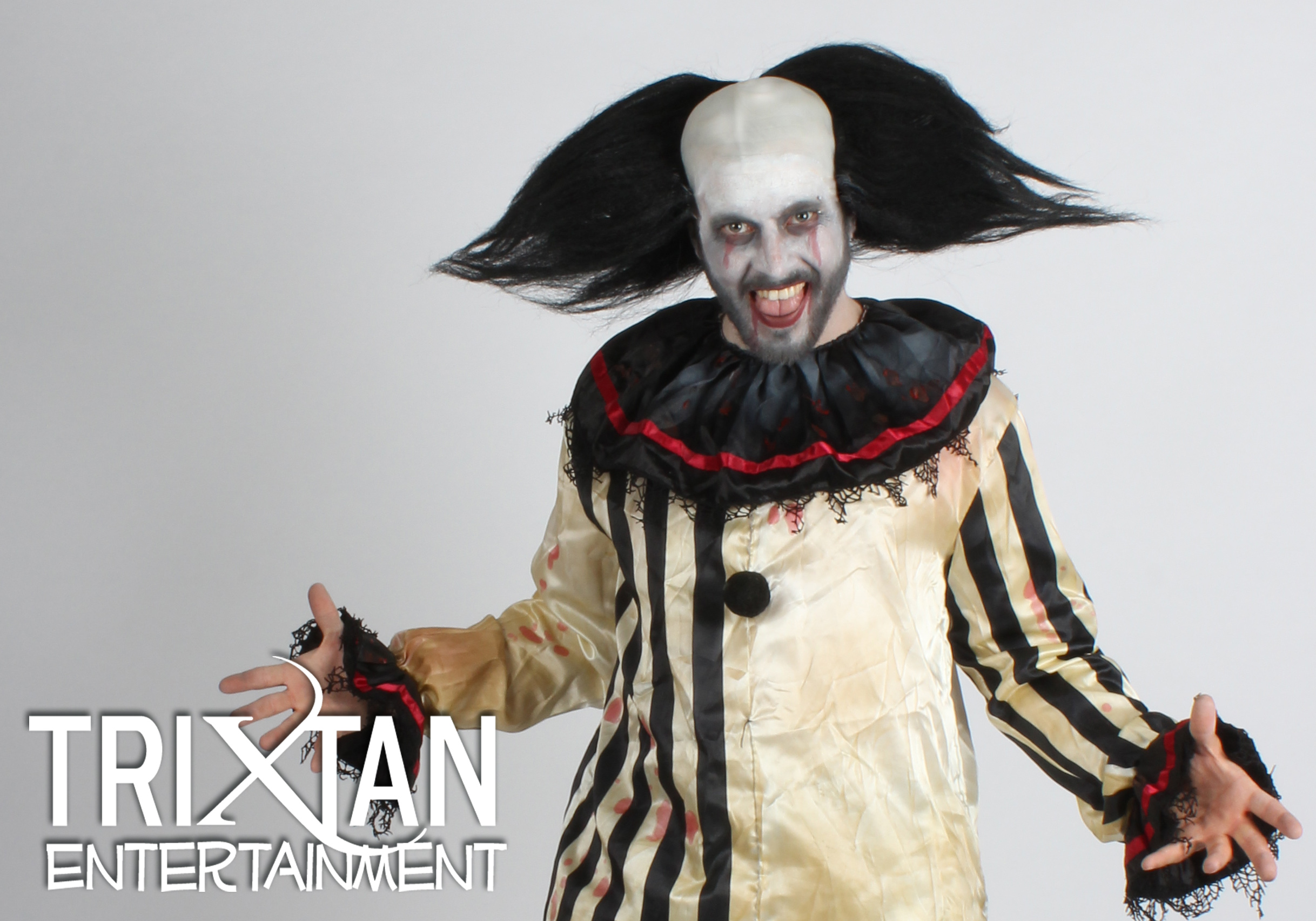
Jester Clown
The Jester Clown, better known as the Court Jester, or Fool, was historically an entertainer during the medieval and Renaissance eras who was a member of the household of a nobleman or a monarch employed to entertain him and his guests. A jester was also an itinerant performer who entertained common folk at fairs and markets. Jesters are also modern-day entertainers who resemble their historical counterparts.
Jesters in medieval times are often thought to have worn brightly coloured clothes and eccentric hats in a motley pattern and their modern counterparts usually mimic this costume. Jesters entertained with a wide variety of skills including but not limited to music, storytelling, acrobatics, juggling, telling jokes, and magic tricks. Much of the entertainment was performed in a comic style and many jesters made contemporary jokes in word or song about people or events well known to their audiences.
